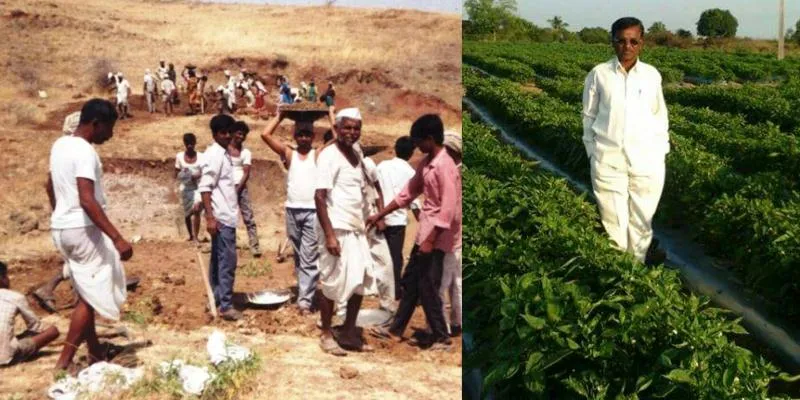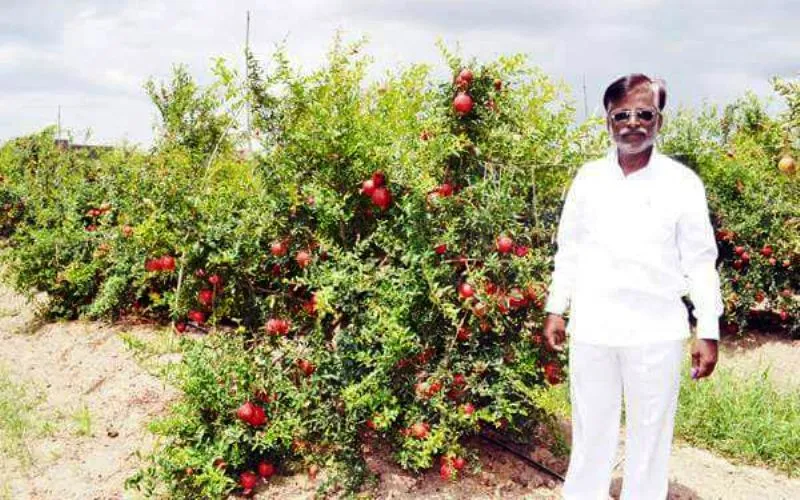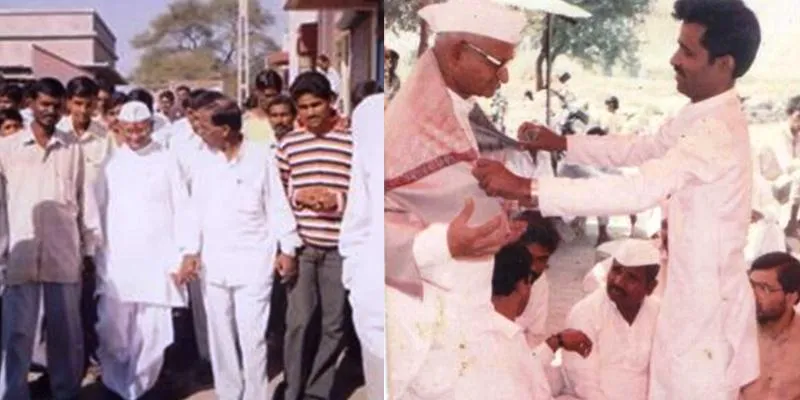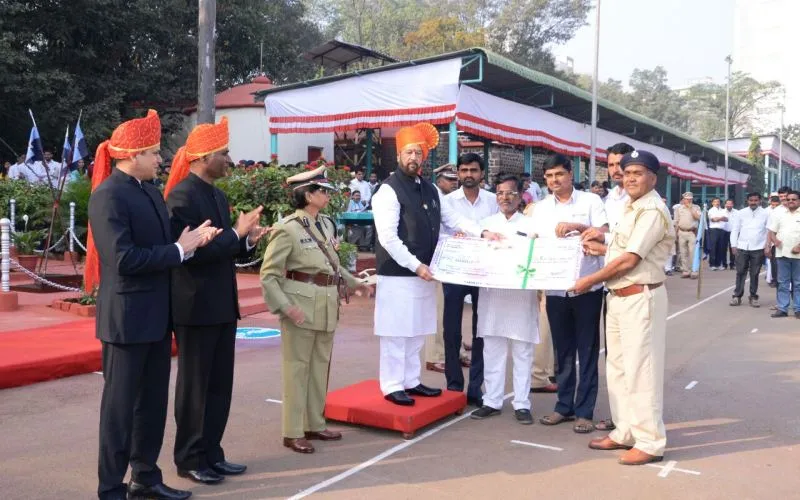Once barren, today this Maharashtra village boasts of 100 farm ponds and large-scale agricultural exports
The efforts of Pawar Bhajandas Vitthal have helped in the transformation of Kadbanwadi into a self-sufficient gram (village).

“Gram vikas ka maksad yahi hai ki gaon ke log sheher main na jaen aur gaon main hi rahe — aisa Gandhiji ne kaha tha (The aim of rural development is that people staying in villages should stay in villages — Gandhi believed in this),” says 59-year-old Pawar Bhajandas Vitthal, pointing towards the need for the village residents to work on making themselves self-dependent.
Pawar hails from the village of Kadbanwadi in Pune district of Maharashtra. He is the first resident from his village to have completed his bachelor’s in science, followed by a bachelor’s in education. Pawar taught science to school students for 28 years before quitting his job and committing all his time to improving his village. He resettled in his village from Pune in 1988, travelling an everyday distance of 96 km from Kadbanwadi to teach.
The need for change
“I was greatly inspired by what Anna Hazare did for his village and wanted to do the same for mine,” says Pawar. In the late ’70s, Hazare had led the efforts to improve Ralegan Siddhi’s water conservation system. As a result, the summer months went by smoothly and agriculture flourished.

Pawar’s vision was to make his village “swayampoorn” (self reliant) in terms of their requirement for water. Pawar took training for this in 1994 under the Government of Maharashtra’s Adarsh Gaon Yojana. Over 300 drought-prone villages across Maharashtra were selected for this and donation of labour was one of the key principles.
Kadbanwadi occupies an area of about 1,500 hectares and is home to 1,600 people. Traditionally, the villagers were a community of shepherds and earned their bread and butter by rearing livestock.
The village comes under the agro-climatic scarcity zone, receiving less than 400 mm of rainfall annually. “Due to the perpetual shortage of water, agriculture was not possible for the residents. The kids did not go to school and would accompany the elders in search of work or take their goats to graze,” he adds. Until 2005, water tankers were needed during the summer months.
Kadbanwadi is now an archetype, demonstrating how maintaining a steady flow of water can change the economic and social conditions of an area.

Driving change
In 1994, after Pawar received training in Ralegan Siddhi, he set up a committee in his village to start work on the water conservation system. Although gathering people posed an initial challenge, once he made them aware about the need for water conservation and how it could bring about a change in their lifestyles, they came around.
Pawar first studied the village — the kind of water conservation system available and the different methods that could be adopted for curtailing soil erosion. Presently, the village has 24 cement bunds that were constructed with the help of the government and residents.
Thereafter, villagers dug out farm ponds — two–three-metre-deep indents used for storing water. The walls and bases of these ponds were coated with lining paper to avoid infiltration. Presently, there are over 100 such farm ponds in the village. The villagers have also built 3 percolation tanks, and 110 earthen bunds. Presently, 300 hectares of land here is used for continuous construction bunds.
In 2013, the villagers started making attempts to conserve the 500 hectares of forestlands. The plucking of plants and cutting of trees was discouraged. Education provided immense support in terms of making the villagers aware. “School-going children understand the importance of preserving the biodiversity, and they are in a good position to explain it to their parents,” he says.
The village has an abundant population of chinkara (Indian gazelle), that were frequently attacked by people. Because of the awareness education has brought, the villagers want to protect them, and have even requested the state government for a sum of Rs 1 crore, which will be used to construct more watering holes and introduce specific grass species so that they can graze well.

Impact of water conservation
Since the water conservation began, the villagers have been able to develop their agricultural skills and start farming. Today, 400 hectares of village land is used to grow pomegranates that are sold in cities such as Mumbai, Bengaluru, Pune, and Hyderabad. Some of the produce is exported as well. 100 hectares of land is used used to grow sugarcane, and another 100 hectares is dedicated for vegetables and seasonal crops. With severe dependence on rainwater before the system was in place, the soil could only support rain-fed crops like jowar and bajra. “Now, after rains, the village’s water stays in the village,” Pawar rejoices.
Due to the inflow of money from agriculture, parents have money to spend on their children’s education. All children go to a Marathi-medium government school in the village. “Many children have become engineers, doctors, and most of them are teachers. There are over 100 government employees in the village and about 75 percent of the young people come back to their village,” Pawar happily announces. He adds that many residents practise agriculture in addition to other jobs.
Pawar’s efforts took two decades to come to fruition, but today, his village illustrates the importance of working together and taking the initiative to drive change. Gandhi also said, “If the village perishes, India will perish too. It will be no more India. Her own mission in the world will get lost.” Pawar’s village echoes these thoughts closely.







